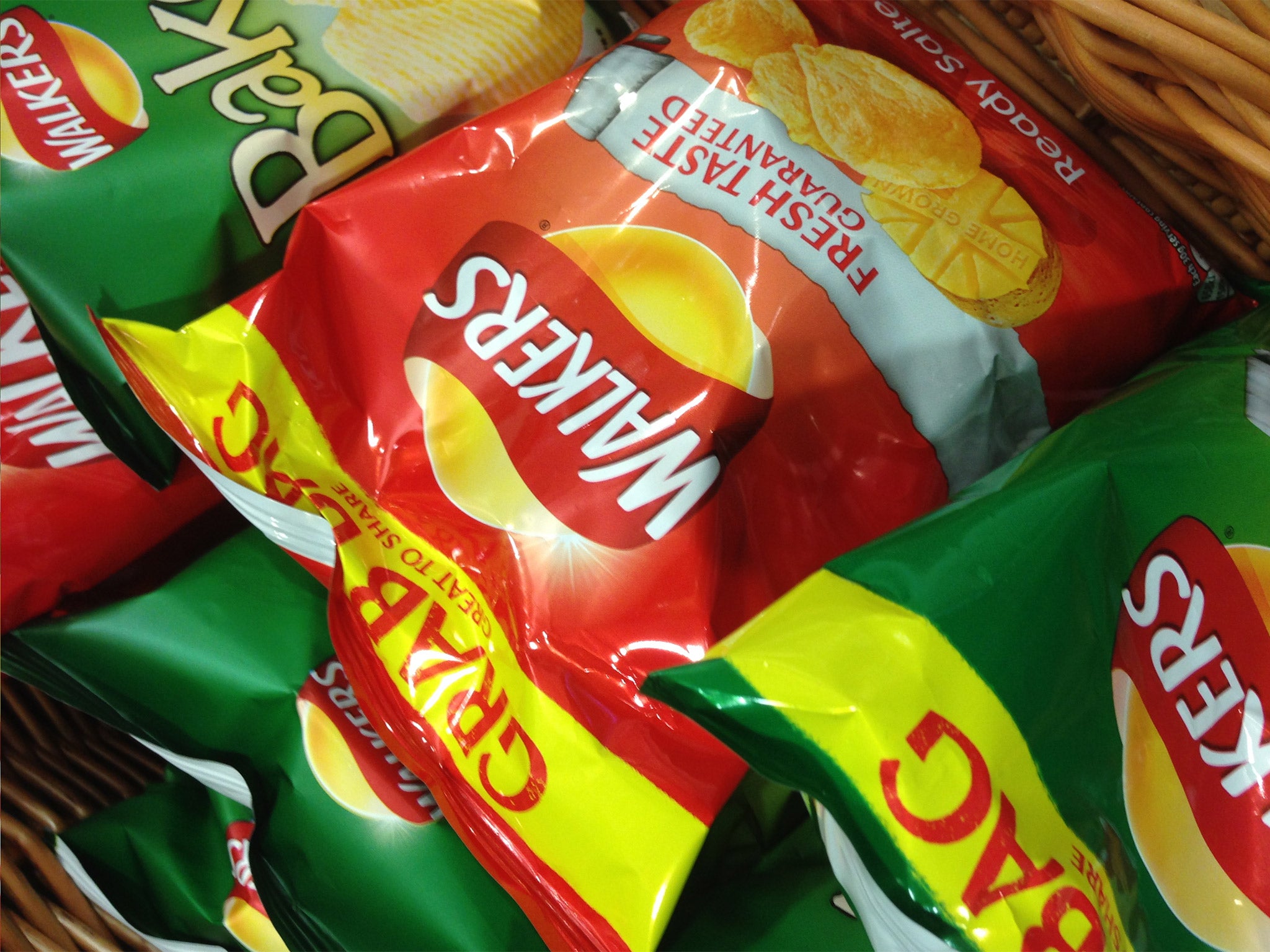Crisp sales are in decline - but this tasty trivia might tempt back the turncoats
As a nation we're filling up on popcorn and pitta chips and forsaking their potato-based predecessors, says Gillian Orr

Lunchbox staple; train journey time-waster; pint of Stella companion; hangover breakfast. Crisps might lend themselves to pretty much any activity (except the cinema; there is a special place in Hell for people who nestle down in the Odeon with a family-sized packet of Kettle Chips), but apparently Britons are turning their back on Walkers, McCoys et al in favour of healthier snacks.
Reports suggest that the value of the UK crisps market has dropped by almost 2 per cent in the past year, with sales of savoury snacks overtaking crisp sales for the first time. In their stead, the population is filling up on treats such as tortilla and pitta chips, Mini Cheddars, popcorn and even kale crisps. But what exactly are we turning our backs on? Here is a multipack of trivia about the crisp.
UK vs USA
Just like light bulbs and the internet, Britain and the US continue to argue about who actually invented crisps (or chips to our Stateside friends). The Yanks reckon that George Crum, a chef at Moon's Lake House in Saratoga Springs, New York, came up with crisps in 1853 in response to a customer who complained that his fried potatoes were too thick. Britain meanwhile, stakes its claim on Dr William Kitchiner, insisting that he included an early recipe for crisps in his 1822 book, The Cook's Oracle, which implored readers to "peel large potatoes... cut them in shavings round and round, as you would peel a lemon; dry them well in a clean cloth, and fry them in lard or dripping." So, basically, crisps. Britain: 1, etc
Frank Smith, king of crisps
The first person to bag up these potato treats and hawk them properly was Frank Smith, an apprentice greengrocer living in London. His boss would fry up a few bags of thinly sliced potatoes as a treat for customers but Smith thought it had potential for a business. He took over the operation and sold packets to shops and pubs. By 1913, he was selling 1,000 bags a week, and in 1920 that figure had risen to half a million. You can probably pinpoint Britain's rising obesity levels back to that year.
What's your flavour?
Tayto, a popular Irish brand, was the first to recognise the seemingly unending opportunities to douse crisps in flavour when it introduced cheese and onion, barbecue, and salt and vinegar varieties in 1957. Companies all around the world sought to buy the rights to Tayto's technique. So you can basically thank it for such recent gastronomical abominations as mango chutney, spaghetti bolognaise and haggis flavoured crisps. When prawn cocktail was introduced by Leicester-based Walkers in the 1980s, the initial seasoning was so pungent that staff went home smelling like a Seventies hors-d'oeuvre. They've since toned it down.
Salt 'n' shake
Smith's plain crisps came with a little packet of salt for sprinkling to taste, but when the American company General Mills bought the brand in the Sixties – thinking it was being helpful – it got rid of the added bag and pre-salted them. Britain revolted, however, and the ritual was soon restored. "Suddenly crisps are fun!" was the confused marketing relaunch. Suddenly?
Size matters
If you've ever decided that one bag of crisps definitely contains more product than another of the same brand, then manufacturers would claim you are imagining things as all bags are portioned by weight rather than volume. And how many potatoes go into the average packet? Walkers says its typical serving is about "one good-quality potato", a measurement somewhat akin to "a piece of string".
What's in a crisp?
Once you pop, you can't stop. But what exactly is it that you're popping? Pringles, those freakishly moreish, homogeneous saucers from a tube, were the subject of a 2008 legal battle after their maker made the extraordinary claim that the product was not, in fact, a crisp. Why? Tax avoidance, of course! A High Court judge ruled that the packaging, "unnatural shape" and potato content of less than 50 per cent meant that Pringles could not be classified as crisps, and therefore were exempt from VAT. The following year, the Court of Appeal overturned the decision, which forced Procter & Gamble, the owner of Pringles, to pay an extra £20m a year. P&G sold the brand to Kellogg in 2012. Incidentally, the moustached fella that appears on the packets is called Julius Pringles. So now you know.
Join our commenting forum
Join thought-provoking conversations, follow other Independent readers and see their replies
Comments